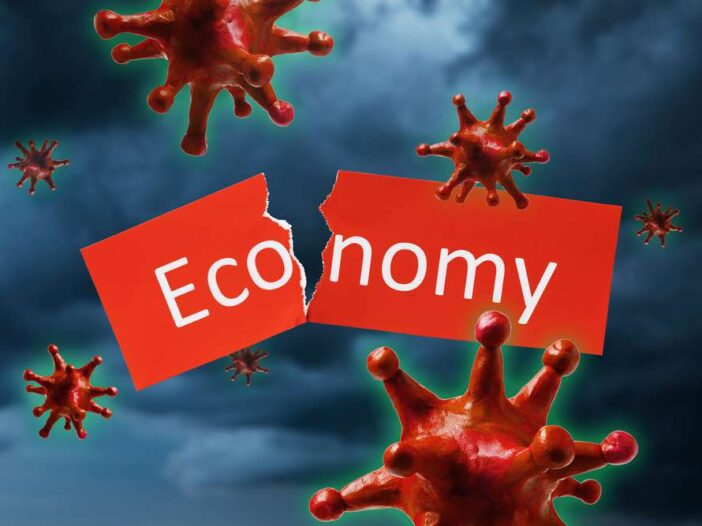Getting back to business…
Things return to normal…
Back to where we were…
Australia is beginning to wake from its economic slumber. The headlines I read seem to focus on how quickly we can return to what was.
The thing is, that might not be possible.
The problem with this idea of getting back to normal, is it assumes that nothing has changed.
Yet plenty of things have changed.
Australia’s unemployment rate skyrocketed through to April. It could be even worse than we thought.
Our government has taken extraordinary steps to provide government funding to certain sectors of the economy. One estimate last week said as much as 75% of Australia was receiving some sort of government support.
To boot, our biggest trading partner is threatening a trade war…
Making our chances of getting things back to the way they were increasingly difficult. We’re not alone though.
As Jim points out below, the US has its own economic problems ahead.
And how the US market reacts to it, will likely dictate what Aussie stocks do.
Read on for more.
|
Until next time, |
|
Shae Russell, |
Stocks Are Far from a Bottom
|
Nothing like what we’re witnessing has ever happened before. Even the savviest analysts cannot yet internalise what happened.
As I explained earlier, comparisons to the 2008 crisis or even the 1929 stock market crash that started the Great Depression fail to capture the magnitude of the economic damage of the virus. You may have to go back to the Black Plague of the mid-14th century for the right comparison.
Unfortunately, the economy will not return to normal for years. Some businesses will never return to normal because they’ll be bankrupt before they’re even allowed to reopen.
In the US, businesses like restaurants, bars, pizza parlours, dry cleaners, hair salons, and many similar businesses make up 44% of total US GDP and 47% of all jobs.
This is where many of the job losses, shutdowns, and lost revenues occurred.
The US government response to the economic collapse has been unprecedented in size and scope…
Learn why a recession in Australia is coming and three steps to ‘recession-proof’ your wealth. Click here to download your free report.
Debt-loaded balance sheets
The US has a baseline budget deficit of about US$1 trillion for fiscal year 2020. Congress added US$2.2 trillion to that in its first economic bailout bill. A second bailout bill added an additional US$500 billion. Another bill may add another US$2 trillion to the deficit.
Combining the baseline deficit, enacted legislation, and anticipated legislation brings the fiscal 2020 deficit to US$5.7 trillion.
That’s equal to more than 25% of GDP and will push the US debt-to-GDP ratio to as high as 130% once the lost output (US$6 trillion annualised) is considered. The previous record debt for the US was about 120% of GDP at the end of the Second World War.
This puts the US in the same category as Greece, Lebanon, and Japan when it comes to the most heavily indebted countries in the world.
The Federal Reserve is also printing money at an unprecedented rate.
The Fed’s balance sheet is already above US$6.7 trillion, up from about US$4.5 trillion at the end of QE3 in 2015. The first rescue bill for US$2.2 trillion included US$454 billion of new capital for a special purpose vehicle (SPV) managed by the US Treasury Department and the Fed.
Since the Fed is a bank, it can leverage the SPV’s US$454 billion in equity provided by the Treasury into $4.54 trillion on its balance sheet. The Fed could use that capacity to buy corporate debt, junk bonds, mortgages, Treasury notes and municipal bonds, and to make direct corporate loans.
Once the Fed is done, its balance sheet will reach US$10 trillion.
That much is known.
What is not known is how quickly the economy will recover. The best evidence indicates that the economy will not recover quickly, and an age of low output, high unemployment, and deflation is upon us.
There is no pent-up demand
Here’s why the economic recovery will not exhibit the ‘pent-up demand’ and other happy-talk traits you hear about on TV…
The first reason the economic downturn will persist is the lost income for individuals. Unemployment compensation and PPP loans will only scratch the surface of total lost income from layoffs, pay cuts, reduced hours, business failures, and individuals who are not only unemployed but drop out of the workforce entirely.
In addition to lost wages through layoffs and pay cuts, many other workers are losing pay in the form of tips, bonuses, and commissions.
Even a fully employed waitress or salesperson cannot collect tips or sales commissions if there are no customers. This illustrates how the economy is tightly linked so that problems in one sector quickly spread to other sectors.
In addition to lost individual income, there is a massive loss of business income. Earnings per share of publicly traded companies are not only declining in the second quarter (and likely the third quarter), but many are negative.
Lost business income will be another source of lower stock valuations and a source of dividend cuts.
Reduced dividends are also a source of lost income for individual stockholders who rely on dividends to pay for their retirements or medical expenses.
Programs such as PPP and other direct government-to-business loans will not come close to compensating for the losses described above. The loans (which can turn into grants) will help for a month or two but are not a permanent solution to lost customers.
For still other firms, the loans won’t help at all because the firms are short of working capital and will simply close their doors for good and file for bankruptcy. This means the jobs in those enterprises will be permanently lost.
From these straightforward events (lost individual income, lost business income, dividend cuts, and bankruptcies) come a host of ripple effects.
Once the government aid is distributed, many recipients will not spend it (as hoped) but will save it. Such savings are called ‘precautionary’. Even if you are not laid off, you may worry that your job is still in jeopardy. Any income you receive will either go to pay bills or into savings ‘just in case’.
In either case, the money will not be used for new spending. At a time when the economy needs consumption, we will not get it.
The economy will fall into a ‘liquidity trap’ where saving leads to deflation, which increases the value of cash, which leads to more saving. This pattern was last seen in the Great Depression (1929–40) and will soon be prevalent again.
Even if individuals were inclined to spend, there would be reduced spending in any case because there are fewer things to spend money on. Shows and sporting events are called off. Restaurants and movie theatres are closed.
Travel is almost non-existent, and no one wants to hop on a cruise ship or visit a resort until they can be assured that the risk of COVID-19 is greatly reduced.
This will guarantee a continued slow recovery and persistent deflation, which makes the slow recovery worse.
In addition to these constraints on demand, there are serious constraints on supply. Global supply chains have been seriously disrupted due to shutdowns and transportation bottlenecks. Social distancing will slow production even at those facilities that are open and can get needed inputs.
One case of COVID-19 in a factory can cause the entire factory to be shut down for a two-week quarantine period. Companies that depend on the output of that factory to manufacture their own products will also be shut down.
[conversion type=”in_post”]
Not how, but CAN we move it forward from here?
Beyond these direct effects of lost income and lost output, there are significant indirect effects on the willingness of entrepreneurs to invest and of individuals to spend.
First among these is the ‘wealth effect’.
When stock values drop 20–30% as they have recently, investors feel poorer even if they have substantial net worth after the drop. The psychological effect is to cause people to reduce spending even if they can afford not to.
This means that spending cutbacks come not only from the middle class and unemployed, but also from wealthier individuals who feel threatened by lost wealth even if they have continued income.
Finally, real estate values will collapse as tenants refuse to pay rent and landlords default on their mortgages, putting properties into foreclosure.
None of these negative economic consequences of the New Depression are amenable to easy fixes by the Congress or the Fed.
Deficit spending will not ‘stimulate’ the economy as the recipients of the spending will pay bills or save money. The Fed can provide liquidity and keep the lights on in the financial system, but it cannot cure insolvency or prevent bankruptcies.
The process will feed on itself expressed as deflation, which will encourage even more savings and discourage consumption.
Based on this analysis, investors should expect the recovery from the New Depression to be slow and weak.
The Fed will be out of bullets. Deficit spending will slow growth rather than stimulate it because the unprecedented level of debt will cause Americans to expect higher taxes, inflation, or both.
The US economy will not recover 2019 levels of GDP until 2022. Unemployment will not return even to 5% until 2026 or later.
This means stocks are far from a bottom.
The S&P 500 Index could easily hit 1,870 (it’s 2,943 as of this writing) and the Dow Jones Index could fall to 15,000 (it’s 24,360 as of this writing).
Those are levels at which investors might want to consider investing in stocks.
Any effort to ‘buy the dips’ in the meantime will just lead to further losses when the full impact of what’s described above begins to sink in.
|
All the best, |
 |
|
Jim Rickards, |
PS: According to Jim Rickards, the recent market crash we’ve witnessed is just the beginning. A total financial collapse might be next. Learn how to protect your savings and investments before it’s too late. Download your free report now.


